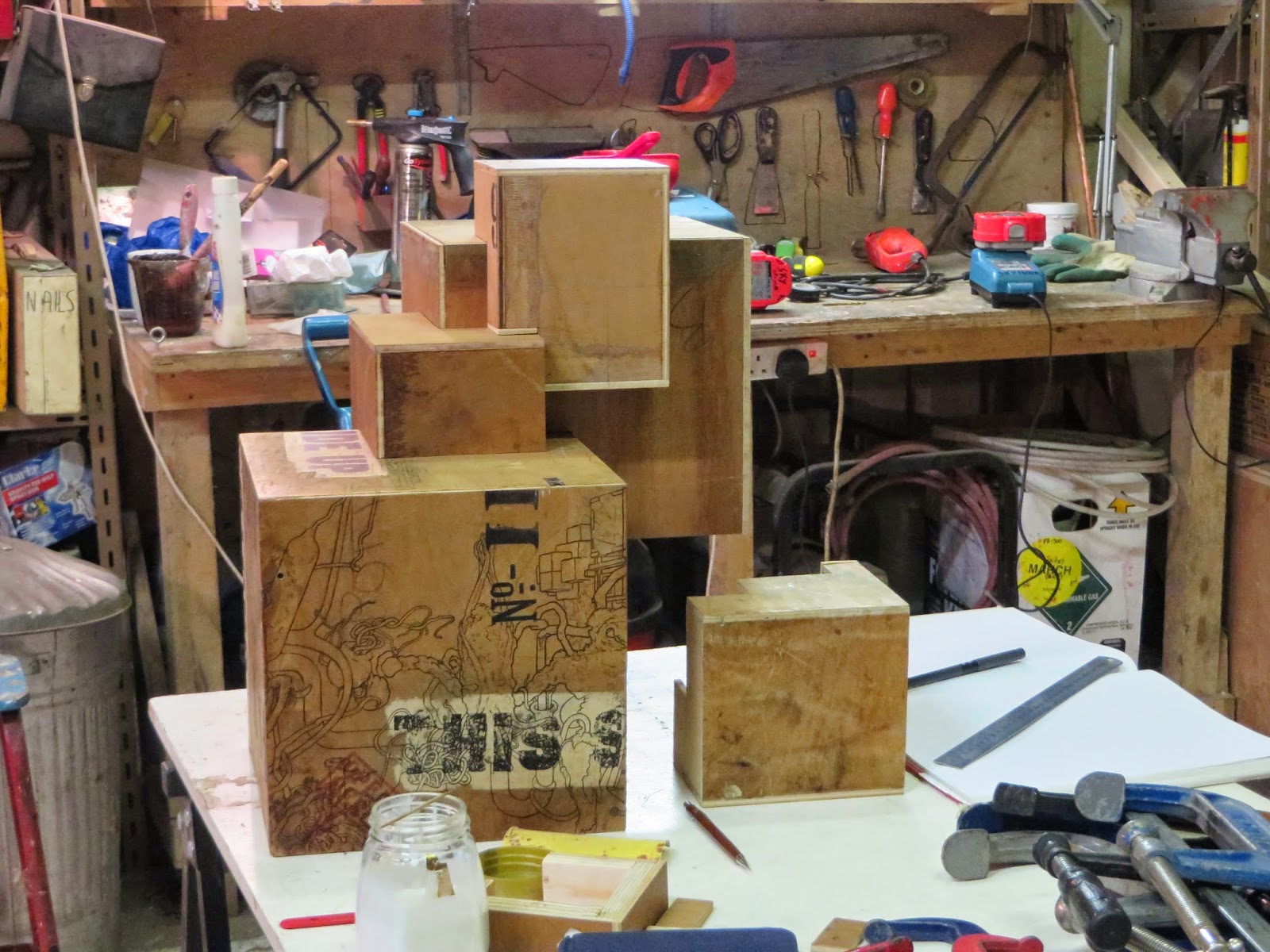"Chisnall creates art that references such things as structure, time and Modernism as they pass through a very contemporary mindset that focuses on humor, transience, functionality and futility.” D. Dominick Lambardi, 'Repurposing With a Passion', The Huffington Post.
Tuesday, 15 July 2014
Huffington Post Article
Yesterday saw D. Dominick Lombardi's article, Repurposing With a Passion, appear in the Arts and Culture section of the Pulitzer Prize winning, digital media enterprise, the Huffington Post. The article is about recycled materials in art, and in it Lombardi asks a number of artists from around the world these four questions -
1. What sorts of materials do you recycle in your art, and where do you find them?
2. What specific incident or realization, if any, brought you to incorporate discarded materials in the making of your art?
3. What message do you hope to send to the viewers of your art in terms of esthetics and ecology?
4. Do you have a political or philosophical agenda?
Below is the section of the article that features my response to the questions asked, but to see the full article click here.
From his studio in London, England, Wayne Chisnall creates art that references such things as structure, time and Modernism as they pass through a very contemporary mindset that focuses on humor, transience, functionality and futility. There is also the presence of popular culture in his thinking, as he addresses the differences between reality and perception, and how that affects the needs, wants and even the formation of the human psyche.
Mr. Chisnall's responses:
"Although I have used plastic toys (which I collected from regular visits to car-boot sales, long before I knew what I was going to do with them) in one of my sculptures I am normally drawn to materials that I feel have a certain 'resonance'. These are usually organic materials that have either interacted in some way with the environment or with people. The materials vary according to the individual project but I generally use anything from wood, metal, glass, human hair, insects to bones and teeth."
"As I prefer to use existing materials as opposed to freshly manufactured ones I tend to find my materials from all around me. This can become a slight problem however as I have a tendency to hoard more stuff than I will ever use."
"The rusty nails and screws that I used to complete my Nail Box sculpture where mostly just picked up off the ground and collected over a four year period. Although most of the nails were found here in London, a good portion of them were also collected whilst I was travelling round Wales, Scotland, Ireland, Europe, Thailand, Cambodia, India, Mexico and the US. A couple of them even came from inside the dome of Saint Paul's Cathedral, when I was working there on a project."
"One of the most abundant sources of materials for me over the last decade has been the skip where I work. I'm fortunate enough to work part-time at the Victoria and Albert Museum in London and with it being the biggest, if not the oldest, design museum in the world it produces an interesting array of waste materials (old and new)."
"The work of animators such as the Brothers Quay and Jan Švankmajer inspires me. As a child I grew up in awe of their dark animated short films and was hypnotized by the way in which they imbued tatty old bits of detritus with life. I don't know if this is where I gained my love of old things or if it just reaffirmed my passion for them, but either way, when I moved from 2D to 3D and started employing the use of found materials in my work, I felt that I was finally being true to myself as an artist."
"Through my art, I hope to show that there's a richness and beauty to be found in old and used objects that isn't evident in newly manufactured goods. By using materials that already show signs of their own personal histories I hope to build narratives where much of the story telling is already in place. Used objects tend to have an evident patina which we can all comprehend and by building with ready-loaded materials we can communicate with the viewer at an already engaged level."
Monday, 7 July 2014
Tattooed Tumour Box (Work Still in Progress)
As you can see from this recent photos from my studio, my tattooed Tumour Box sculpture is progressing nicely. Most of the additional box sections have already been constructed (unless I deceide to let the piece grow totally out of control) but until I come up with the rest of the requisite drawings and transpose them to the sculpture's, now multifaceted, surface I can't actually start gluing any of the parts together.
First
I have to construct every section, work out how it will all eventually fit
together, come up with a separate drawing for each section (working out how
each drawing will flow over the various planes and fit in with all the drawings
covering the rest of the piece), transfer each drawing to its relevant section,
and only then will I get to the fun bit of sticking it all together.
One of the difficulties of constructing the individual sections in the first place is that until the sections that go before them are actually glued in place to the main body of the sculpture, it's hard to work out the dimensions for these later sections. But I suppose that the challenge is part of the fun - at least it keeps the grey matter ticking.
Subscribe to:
Comments (Atom)


.jpg)

